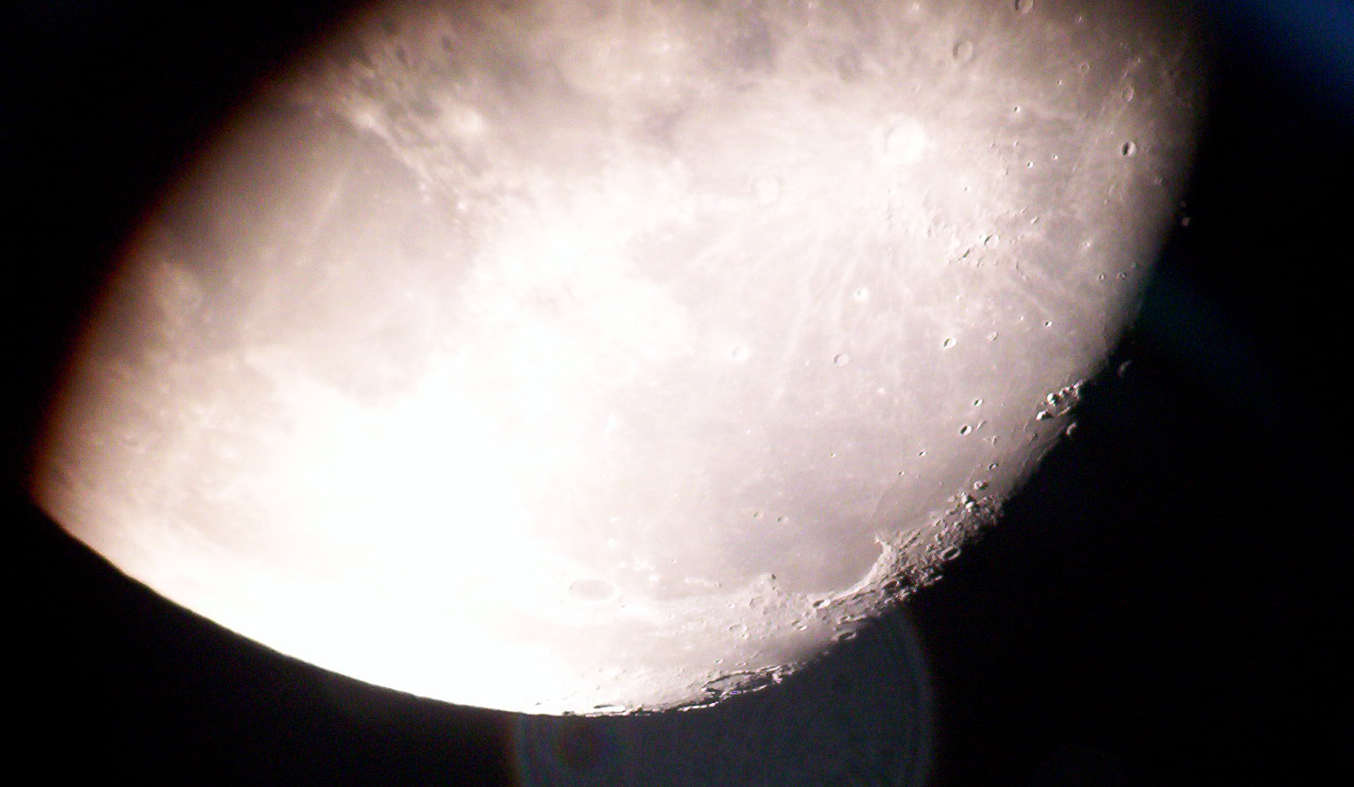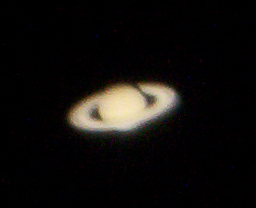Photos taken
through my telescope
Photographing objects in the night sky through a telescope is a complicated process requiring precision equipment and a lot of patience. However -- there is one type of astronomical photography that is as simple as it can be -- stick a camera up to the telescope eyepiece and shoot.
Now, this is not the best way to take photos of objects in the sky for several reasons. First, the earth is moving which causes the object to move, so, you must take a quick photo to catch the object standing still. Second, even though the object you are looking at may appear bright to your eye, there really is very little light -- except, of course, when viewing the moon. Film or digital cameras really can't capture a very good image with one shot. All this adds up to the fact that by holding the camera up to the eyepiece and shooting, you can only take photos of bright objects -- generally the moon and the planets.
Still, you can get acceptable photographs by holding a camera up to the telescope eyepiece and taking a shot. I use two digital cameras to take photos through my telescope:
- A Kodak EasyShare C300. I have taken photos with this camera by holding it up to the eyepiece, looking at the LCD screen on the camera, focus, shoot. (Be certain the flash is turned off.) On these pages you'll see some of my results with this simple method.
- A Sony DSC-P93 with a Scopetronix adapter that allows a telescope eyepiece to be attached. As of August 2007, this is the camera that I use most often. This link takes you to a page describing the Sony camera with adapter. UPDATE: As of late 2015, Scopetronix is out of business and I have not found another source for the adapters used on my camera.

Moon; 10 March 2006; 2230 hours, EST.
XT-12 telescope; 10mm TeleVue PanOptic eyepiece; 150X
Kodak EasyShare C300 camera, one exposure

Saturn; 10 March 2006; 2215 hours, EST
XT-12 telescope; 7mm Nagler eyepiece; 214X
Kodak EasyShare C300 camera, one exposure
|
Back to Amateur Astronomy intro page. |
|
| More photos through the telescope | |
| 29 May 2006 | Moon and Jupiter: good shot of the moon; photo of Jupiter is no good |
| 10 December 2006 | Moon and Saturn: The Moon and Saturn passed very close to each other; here are two photographs -- not bad for simple equipment. |
| 16 December 2006 | Crescent moon and bad photo of Saturn. |
| 11 February 2007 | Two fuzzy photos of Saturn |
| 19 February 2007 | Two photos of crescent moon and Venus just after sunset |
| 4 March 2007 | Photos of Saturn |
| 5 March 2007 | Photos of Saturn |
| 8 August 2007 | Photo of Jupiter with three moons and a nearby star. |
| 1 December 2008 | Photos of conjunction of Venus, Jupiter, and the Moon |
| 29 September 2009 | Photo of Moon and Jupiter behind clouds |